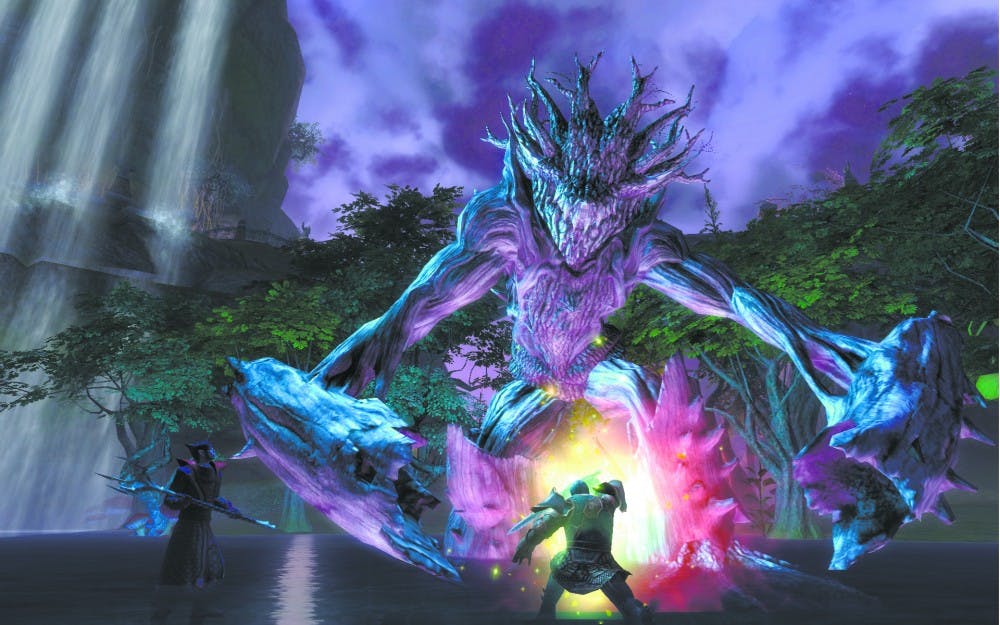“World of Warcraft” is the epitome of an online video game. It has millions of dedicated players, meaning its revenue is arguably insurmountable by competitors. However, a new game is directly challenging Blizzard Entertainment’s giant.
Developed by Trion Worlds, Inc., “Rift: Planes of Telara” is an upcoming massively multiplayer online role-playing game (MMORPG) that is designed for experienced massively multiplayer online gamers and includes several unique evolutions to the online gaming scenario. With enough of a following behind “Rift,” it may pose a formidable threat to “World of Warcraft.”
In many ways, character creation in “Rift” is more analogous to a tabletop role-playing game than most other MMORPGs. “Rift” allows players to choose from four different base classes: Cleric, Mage, Rogue, and Warrior, each with seven unique talent specialization sub-classes.
By the time a player has acquired enough experience points to progress a character’s first eight levels, they have chosen three specialization sub-classes and are able to harmoniously play them all at once, creating a uniquely synergistic character.
After each level is achieved, the player is given two talent points to distribute as her or she feels fit between the multiple trees. However, once the character reaches level seven, only one point is given per odd level and two for every even level attained.
The story of “Rift” initiates with inter-dimensional time travel and planetary destruction. Two factions, the Guardians and the Defiant, are in dispute over how to save the world from an impending Armageddon by Telara’s supreme adversary, the death god Regulos.
For the seven hours I explored what “Rift” had to offer in its early adventure, I allied with the Defiant, playing a swift attacking Rogue with my sub-class talent specializations being Blade Dancer, Assassin and Rift Stalker.
One of the first things I noticed about “Rift” is the simplistic user-interface configuration. The game’s user-interface is well created, showing health and energy bars, combination points and status ailments hovering directly above the player’s character and target.
This allows more focus on combat and situational awareness than watching health bars and status modifiers does. Furthermore, at the low levels in which I played, “Rift’s” built in user-interface gives enough customization to avoid third party add-ons.
After the game’s introduction to character control, quests, looting, and combat, I was teleported back in time through a machine that fissured in the time-space continuum with the purpose of defeating Regulos.
Soon after my physics-defying journey ended, I noticed “Rift’s” golden attraction — tears between dimensions known as planar rifts. When a rift is opened, hordes of elementally inspired creatures whose purpose is the obliteration of Telara are summoned.
The best and worst aspect of the rift portals is their unpredictability. I had logged out for thirty minutes when everything was peaceful, fairly green and sunny. Once I logged back in, a death rift gate had been opened in the sky only yards away from where I stood; lighting strikes flashed across the sky and hordes of enemies attacked the friendly non-player-controlled characters immediately surrounding me. Caught off guard by the sudden change and overwhelming opposition, I ended up meeting a hasty demise.
Once dead I was given the options of “Soul Walk” and “Respawn.” “Soul Walking” allows a player to merge with a character’s body after 15 seconds has passed; however, during this time lapse, players are able to walk as a soul to wherever they would like, spawning at their current location once 15 seconds has passed. Choosing “Respawn” transports a player’s soul to a spirit healer. At this point the character must run to wherever his or her body is rotting to continue exploration.
A welcome change to many MMORPGs is that the soul receives durability damage upon death instead of instead of armor and weapons. This reduces combat effectiveness by 10 percent each demise, but a healer can repair the soul for a fee. Overall, the healer’s fee is vastly cheaper than repairing individual inventory items.
With “Rift,” Trion Worlds, Inc. has effectively created a fun and worthwhile alternative to “World of Warcraft” and the slowly improving “Final Fantasy XIV.” However, “Rift” may befuddle many novice MMORPG players with its over-zealous class customization, complicated move rotations and rampant situational awareness experiences.
“Rift: Planes of Telara” is scheduled to release on March 1, 2011.
Reach the reporter at tdmcknig@asu.edu





